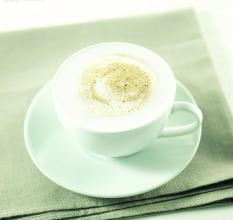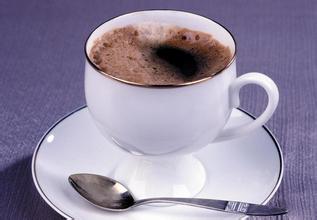How to mix espresso and skills to introduce high-quality coffee beans
A vivid analogy is: "the roaster is a machine between a popcorn machine and a clothes dryer." The temperature in a large industrial baking bucket can reach 288 degrees Celsius, and the coffee beans first turn yellow and smell like popcorn. After about 8 minutes, it began to snap and expand, and when the temperature reached 204 degrees Celsius, the coffee beans began to turn brown and the oil began to spill out. The spilled oil is called "caffeine" or "caffeine", and the chemical reaction between calories and caffeine is called "pyrolysis", which produces a strong coffee flavor. In another 3 to 5 minutes, there will be another snapping sound in the machine, and the color of the coffee will soon change to a dark color, indicating that it has been baked. When the preset baking temperature is reached, cold air can be used to stop baking. The well-roasted coffee beans have no wrinkles on the surface and the gloss is symmetrical, which fully demonstrates its unique flavor. If you are too impatient at the beginning of baking, there will be spots on the bean skin and the taste will become bitter and choking.
In 1992, the second generation of Yili managers commissioned architect Matteo Thun to design a set of white coffee porcelain cups, which gave birth to a series of popular Italian coffee collection cups. Every year Yili invites modern artists to work together to design the annual collection cup. Despite the ever-changing exterior decoration, the cup itself has always strictly followed the Italian family's definition of the perfect Espresso coffee cup: "A small thick-walled porcelain cup with a capacity of no more than 50ml." Small capacity to ensure that the drinks are more concentrated; use synthetic materials to ensure that the foam and liquid parts are as clear as the liquid. "
Generally, roasting is divided into shallow, medium and deep degrees, and the baking time varies depending on the type of coffee required. The light roasted coffee beans are light and sour, the intermediate roasting is sour and bitter, and the deep roasting color is rich and bitter. The lighter the roasting degree is, the stronger the sour taste of the coffee bean is, the deeper the baking degree is, the sour taste is gradually lost, and the bitterness is heavier. Professional baking methods are usually divided into the following eight stages: very shallow baking (Light Roast), shallow baking (Cinnamon Roast), micro baking (Medium Roast), medium baking (High Roast), medium and deep baking (Cicty Roast), deep baking (Full-City Roast), very deep baking (French Roast) and very deep baking (Italian Roast). Deep baking, also known as "Italian baking", is mainly popular in Latin countries and is considered to be the most suitable for Espresso. The color of the very deep-roasted coffee beans is black, and the oil has infiltrated to the surface, so it has a bitter taste of carbon ash, and the mellowness is obviously reduced.

Important Notice :
前街咖啡 FrontStreet Coffee has moved to new addredd:
FrontStreet Coffee Address: 315,Donghua East Road,GuangZhou
Tel:020 38364473
- Prev

Coffee knowledge Coffee blending skills introduction when it became popular to mix coffee beans
Taste = Coffee Variety Sour Mocha, Kona, Mexico, Guatemala, Costa Rica SHB, Gilly Mazaro, Colombia, Delvado, Western Hemisphere washing quality New Bean bitter Java, Mantenin, Bogota, Congo, Uganda Colombia (Metning), Venezuela (aged coffee), Blue Mountains, Gillimanjaro, Mocha, dangerous Land
- Next

What are the requirements for coffee beans to be paired and roasted, such as
On the other hand, such roasting is also related to the birthplace of Espresso. Espresso is a coffee extraction method originating in Italy. At the end of the 19th century and the beginning of the 20th century, when Espresso was born, Italy was not a rich country in Europe. Limited by its own economic strength, Italy's popular coffee quality was not excellent, and most of them were inferior. Luo
Related
- Does Rose Summer choose Blue, Green or Red? Detailed explanation of Rose Summer Coffee plots and Classification in Panamanian Jade Manor
- What is the difference between the origin, producing area, processing plant, cooperative and manor of coffee beans?
- How fine does the espresso powder fit? how to grind the espresso?
- Sca coffee roasting degree color card coffee roasting degree 8 roasting color values what do you mean?
- The practice of lattes: how to make lattes at home
- Introduction to Indonesian Fine Coffee beans-- Java Coffee producing area of Indonesian Arabica Coffee
- How much will the flavor of light and medium roasted rose summer be expressed? What baking level is rose summer suitable for?
- Introduction to the characteristics of washing, sun-drying or wet-planing coffee commonly used in Mantenin, Indonesia
- Price characteristics of Arabica Coffee Bean Starbucks introduction to Manning Coffee Bean Taste producing area Variety Manor
- What is the authentic Yega flavor? What are the flavor characteristics of the really excellent Yejasuffi coffee beans?

